- europages
- >
- COMPANIES - SUPPLIERS - SERVICE PROVIDERS
- >
- electrode sensor
Results for
Electrode sensor - Import export

SHANGHAI GAOHE IMP. & EXP. CO., LTD.
China
The DJY and DJM series boiler drum electrode sensor is matched with our company’s UDZ double color digital display intelligent liquid level controller. It can be widely used in large and medium-sized boilers of power generation, dyeing and weaving, chemical industry and other industrial and mining enterprises. It can be used to monitor the water level of boiler drum, high-pressure heater, generator, evaporator, condenser, Start-up Separator of once through boiler, water tank of double water-cooled generator, and liquid level measurement of other conductive liquids. Screw Type Electrode Sensor This electrode sensor mainly used on boiler and to measure the boiler drum water level.
Request for a quote
INNOVATIVE SENSOR TECHNOLOGY IST AG
Switzerland
The IST AG LFS1710 conductivity sensor offers a typical cell constant of 0.44 cm-1 and a conductivity measuring range from 0.2 mS/cm to 200 mS/cm within an operating temperature range of -30 °C to +100 °C. However, it easily withstands temperatures over 130 °C enabling processes like sterilization by autoclaving. Further advantages of the LFS1710 thin film conductivity sensor include: — Wide conductivity and temperature range — Fast response time — Optimal accuracy — Resistance to various chemicals1) — Excellent long-term stability — Integrated RTD for temperature compensation — Four-electrode measurement2) — Customer-specific sensor available upon request The IST AG LFS1107 conductivity sensor is available with either Pt/Ni-wires or Cu/Ag-wires with PTFE-insulation (AWG 30) as standard wires.
Request for a quote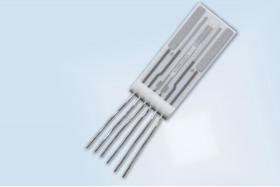
INNOVATIVE SENSOR TECHNOLOGY IST AG
Switzerland
The IST AG LFS1305 conductivity sensor offers a typical cell constant of 0.86 cm-1 and a conductivity measuring range from 100 μS/cm to 200 mS/cm within an operating temperature range of -30 °C to +100 °C. However, it easily withstands temperatures over 130 °C enabling processes like sterilization by autoclaving. Further advantages of the LFS1305 thin-film conductivity sensor include: — Wide conductivity and temperature range — Fast response time — Optimal accuracy — Resistance to various chemicals1) — Excellent long-term stability — Integrated RTD for temperature compensation — Four-electrode measurement2) — Customer-specific sensor available upon request
Request for a quote
INNOVATIVE SENSOR TECHNOLOGY IST AG
Switzerland
The IST AG LFS1505 conductivity sensor offers a typical cell constant of 0.68 cm-1 and a conductivity measuring range from 100 μS/cm to 200 mS/cm (extended range from 10 μS/cm to 200 mS/cm possible with cell-constant correction) within an operating temperature range of -30 °C to +100 °C. However, it easily withstands temperatures over 130 °C enabling processes like sterilization by autoclaving. Further advantages of the LFS1505 thin-film conductivity sensor include: — Wide conductivity and temperature range — Fast response time — Optimal accuracy — Resistance to various chemicals1) — Excellent long-term stability — Integrated RTD for temperature compensation — Four-electrode measurement2) — Customer-specific sensor available upon request The IST AG LFS1107 conductivity sensor is available with either Pt/Ni-wires or Cu/Ag-wires with PTFE-insulation (AWG 30) as standard wires.
Request for a quote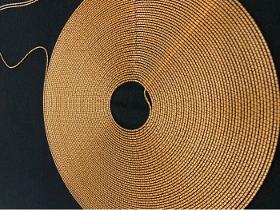
EMBRO GMBH
Germany
Smart embroidery is one of the most well-known technologies to add functions to and integrate them in textiles. Thus, we produce intelligent textiles with our special CNC wire laying technology. Potential applications include: > textile-based electrodes > flexible antennas > textile sensors > medical devices reliant on electromagnetic coils
Request for a quote
BEDIA MOTORENTECHNIK GMBH & CO. KG
Germany
BEDIA level monitoring sensors are used to monitor the filling levels of liquids. The sensors react when a filling level is exceeded or falls below a limit. Aqueous mediums like coolants, AdBlue®, fresh water, waste water, bilge water and oil-based liquids like motor oils, hydraulic oils, fuels and brake fluids can be monitored. Since they contain no mechanical moving parts, their function will not be influenced by dirt particles or other influences. No electrical current is sent through the medium via an electrode with BEDIA sensors, an electrolysis of the medium is not possible. Operating Principle The function of the sensor is based on the capacitive principle. It detects the change in capacitance that arises when an electrode surrounded by air is immersed into a liquid medium. This change in capacitance at the electrode of the sensor excites an oscillator, causing it to oscillate. Then this signal is processed by a microprocessor-based evaluation circuit.
Request for a quote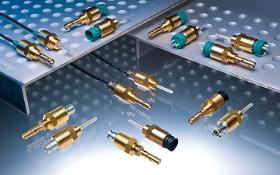
BEDIA MOTORENTECHNIK GMBH & CO. KG
Germany
BEDIA level monitoring sensors are used to monitor the filling levels of liquids. The sensors detect when a filling level is exceeded or falls below a limit. Water-based liquids like coolants, AdBlue®, fresh water, waste water and oil-based liquids like motor oils, hydraulic oils, fuels and brake fluids can be monitored. Operating Principle The function of the sensor is based on the capacitive principle. It detects the change in capacitance that occurs when an electrode surrounded by air is immersed into a liquid medium. This change in capacitance at the electrode of the sensor excites an oscillator. This signal is processed by a microcontroller-based evaluation circuit which activates or deactivates an output stage. Types of Media The level monitoring sensors are designed for two different media types: For electrically conductive liquid media with relative permittivity within a range of εr 35 … 85 (water, coolant, water/glycol mixture) For electrically non-conductive liquid media
Request for a quote
BEDIA MOTORENTECHNIK GMBH & CO. KG
Germany
Areas of Application and Advantages BEDIA CLS 10 stands for special versions of our well-proven CLS 40 series for heavy duty applications. Currently, the BEDIA CLS 10 series includes a variety of sensors, which are compatible replacement parts for level switches from Cooper Standard and Robert Shaw which are obsolete nowadays – and this in well proven BEDIA quality. This also includes sensors with 2 complementary CMOS outputs. It should be emphasized that the water sensors with two complementary outputs can be operated with a supply voltage of 4.75 V DC – 32 V DC. Operating Principle The function of the sensor is based on the capacitive principle. It detects the change in capacitance that arises when an electrode surrounded by air is immersed into a liquid medium. This change in capacitance at the electrode of the sensor excites an oscillator, causing it to oscillate (at a frequency of approx. 600 kHz). Then this signal is processed by a microprocessor-based evaluation circuit.
Request for a quote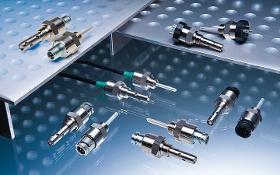
BEDIA MOTORENTECHNIK GMBH & CO. KG
Germany
BEDIA level monitoring sensors are used to monitor the filling levels of liquids. The sensors detect when a filling level is exceeded or falls below a limit. Water-based liquids like coolants, AdBlue®, fresh water, waste water, bilge water and oil-based liquids like motor oils, hydraulic oils, fuels and brake fluids can be monitored. Since they contain no mechanical moving parts, their function will not be influenced by dirt particles or other influences. No electrical current is sent through the medium via an electrode with BEDIA sensors, an electrolysis of the medium is not possible. Operating Principle The function of the sensor is based on the capacitive principle. It detects the change in capacitance that occurs when an electrode surrounded by air is immersed into a liquid medium. This change in capacitance at the electrode of the sensor excites an oscillator. This signal is processed by a microcontroller-based evaluation circuit which activates or deactivates an output stage.
Request for a quote
KROHNE MESSTECHNIK GMBH
Germany
pH sensor for water applications The OPTISENS PH 8100 sensor is characterised by standardised design, easy handling and a long life cycle. In combination with the MAC 100 signal converter it is possible to create an extremely reliable and low-cost measurement system, which is suitable for a wide range of water analysis measurement tasks. Designed as combined electrodes with built-in reference electrode the OPTISENS PH 8100 sensor type is equipped with two open diaphragms and integrated temperature sensor Pt100. The sensor can be easily adapted to various application requirements and it is extremely service friendly and durable.
Request for a quote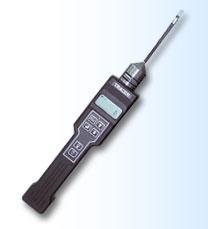
COMPUR MONITORS GMBH & CO. KG
Germany
Tracer – Leak detection in the ppb range Application The Tracer has its strength where other methods of leak detection would fail, because they have cross sensitivities to other gases. Such selectivity is requested in plants using or producing extremely toxic substances. These plants always have a „Zero Emission Policy“ in force. Here high sensitivity in combination with good selectivity is required. Sensor technology Electrochemical sensors can be designed to be very selective and sensitive at the same time by the right material choice for electrodes and electrolyte. These sensors will not respond to less dangerous substances that might be around in the plant such as hydrocarbons, carbon monoxide, hydrogen or even humidity. A detection limit of Phosgene as low as 2 ppb is no problem for this sensor technology! The Tracer is capable to detect even the smallest traces of toxic gases. The detection limit is in the low ppb range depending on the substance to be detected. As a leak detector might be exposed to very high concentrations, it must not be used as a personal monitor. To avoid it being abused as such, it displays no concentration, but only a dimensionless figure or a bar graph. Using the Tracer To locate a leak, move the sample intake along the surface to be inspected. The measured value will increase when a leak is approached. The display can be selected between bar graph and digital. A control tone and LED will increase in frequency with increasing measured value similar to a Geiger counter. The Tracer will protect itself from poisoning. If the measured value goes out of range the pump will go off and start again when it drops below 95% of the range. The graphic display is easy to read. At night or in dark places in the plant a backlight can be switched on. Consumables such as sensor, filter or sampling probe can easily be replaced without tools. Field test results – the high range version The first tests in plants have proven that an ultra-low measuring range does not always do the job. Therefore Compur Monitors has completed the Tracer product range by a new HIGH range version. It uses an orifice in front of the sensor increasing the measuring range by a factor of 20. The user can do that without changing the amplifier adjustment. All it takes is just replacing the LOW range sensor by a HIGH range sensor and so cover a measuring range from the low ppb range up to the two digit ppm level! The Tracer comes with 4 AA size disposable batteries. This version is not explosion proof. Ex Version Upon request the tracer can be delivered in an explosion - proof version with rechargeable batteries.
Request for a quote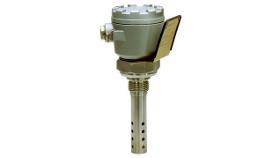
ENDRESS+HAUSER AG
Switzerland
Condumax CLS12 is a robust conductivity sensor for steam/water cycles in power plants. It is optimized for low conductivities (even under high temperatures and pressures) to protect your processes from deposits and corrosion. Low maintenance and simple to commission (large connection compartment), this is the ideal sensor for tough environments.
Request for a quote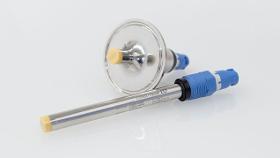
ENDRESS+HAUSER AG
Switzerland
Memosens CLS82D is a hygienic, digital sensor for applications with widely varying conductivity values, where it performs reliably, safe and fast. Numerous certificates, various process connections and a small compact design ensure the perfect fit for your process. With Memosens digital technology, CLS82D combines maximum process and data integrity with simple operation. It resists corrosion and moisture, enables lab calibration and facilitates predictive maintenance.
Request for a quote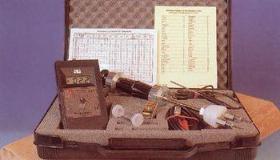
KRONSEDER TROCKENTECHNIK GMBH & CO. KG
Germany
KHM 102 PROFESSIONAL Smallest unit of measure: +/- 0,5 % Temperature compensation: automatic or by way of external sensor from -50 to + 95° C by way of internal sensor from 0 to 60° C Permissible surrounding temperature: 0 to 60° C Permissible surrounding humidity: 0 to 80% (non-condensing) Electricity supply: 9 V block battery (type: JEC 6F"") included in scope of supplies battery EOL indicator: automatic, “BAT” when battery is empty KHM 102 PROFESSIONAL S91 digital moisture measuring unit with automatic temperature compensation (ATC), battery, measuring cable, temperature hand sensor, hollow hammer electrode with steel pins, ready to operate with measuring tables for wood in the carrying case.
Request for a quote
KRONSEDER TROCKENTECHNIK GMBH & CO. KG
Germany
KHM 101 JUNIOR Smallest unit of measure: +/- 0,5 % Temperature compensation: automatic or by way of external sensor from -50 to + 95° C by way of internal sensor from 0 to 60° C Permissible surrounding temperature: 0 to 60° C Permissible surrounding humidity: 0 to 80% (non-condensing) Electricity supply: 9 V block battery (type: JEC 6F"") included in scope of supplies battery EOL indicator: automatic, “BAT” when battery is empty KHM 101 JUNIOR S91 digital moisture measuring unit with automatic temperature compensation (ATC), battery, measuring cable, temperature hand sensor, shock electrode with steel pins, ready to operate with measuring tables for wood in the carrying case.
Request for a quote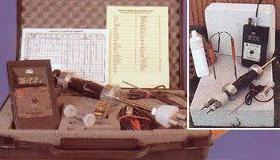
KRONSEDER TROCKENTECHNIK GMBH & CO. KG
Germany
KHM 104 BAHO Smallest unit of measure: +/- 0,5 % Temperature compensation: automatic or by way of external sensor from -50 to + 95° C by way of internal sensor from 0 to 60° C Permissible surrounding temperature: 0 to 60° C Permissible surrounding humidity: 0 to 80% (non-condensing) Electricity supply: 9 V block battery (type: JEC 6F"") included in scope of supplies battery EOL indicator: automatic, “BAT” when battery is empty KHM 104 BAHO (BUILDING MATERIALS / WOOD) as in the PROFESSIONAL carrying case S91 digital moisture measuring unit with automatic temperature compensation (ATC), battery, measuring cable, temperature hand sensor, hollow hammer electrode with steel pins, ready to operate with measuring tables for wood and building materials, 100 mm brush probe, conductive paste and red building material plug.
Request for a quote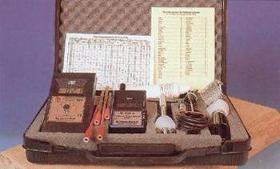
KRONSEDER TROCKENTECHNIK GMBH & CO. KG
Germany
KHM 103 EXPERT Smallest unit of measure: +/- 0,5 % Temperature compensation: automatic or by way of external sensor from -50 to + 95° C by way of internal sensor from 0 to 60° C Permissible surrounding temperature: 0 to 60° C Permissible surrounding humidity: 0 to 80% (non-condensing) Electricity supply: 9 V block battery (type: JEC 6F"") included in scope of supplies battery EOL indicator: automatic, “BAT” when battery is empty KHM 103 EXPERT S91 digital moisture measuring unit with automatic temperature compensation (ATC) and M100B precision space and temperature measuring unit, batteries, measuring cable, temperature hand sensor, shock electrode with steel pins, brush probe, special board sensor, conductive paste, building material plug complete with measuring tables for wood and building materials in the carrying case.
Request for a quoteDo you sell or make similar products?
Sign up to europages and have your products listed
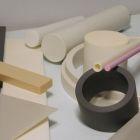
MICROCERTEC
France
Macor® is most used for its machinability. Softer as the other ceramic materials, Macor® allows fast turnaround to obtain complex structures with tight tolerances. Macor® can be grinded and facilitate the drilling and milling operations. Selection of materials Microcertec uses Macor® from the comapny Corning. Macor® is a glass ceramic from Silica (50%) and also with Magnesium und Aluminium. Properties Macor® have the following features : machinability good electrical insulation good thermal insulation dimensional stability vacuum resistant Our typical applications Macor® is widely used in the following applications : tools for the machine in production insulator electrode holders sensor holders lense holders mulberry outlet Download Material properties datasheet : ceramics and quartz (1472 Ko)
Request for a quote
MICROCERTEC
France
Macor® is mainly used for its machinable properties. Because it is softer than advanced ceramics, Macor® permits to achieve complex geometries more rapidly with the same level of accuracy. In addition to be able to be ground like other ceramics, Macor® can be machined with carbide tools which make drilling and milling easier. Products Macor® is mainly used to manufacture the following products : tooling parts for production machinery insulators electrode carriers lens holders sensor carriers Materials Microcertec utilizes Macor® made by Corning. Macor® is a glass ceramic the chemical composition of which is mainly borosilicate to about 75 %, alumina and magnesia. Macor® has the following properties : machinable good electrical insulation good thermal insulation dimension stability to about 800°c vacuum compatible Download Precision machining of Macor (374.69 Ko)
Request for a quoteResults for
Electrode sensor - Import exportNumber of results
20 ProductsCompany type